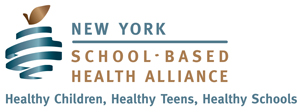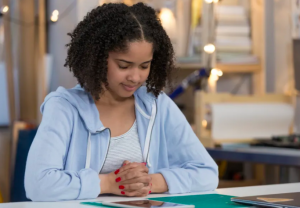Original article written by
After Randy Bowen lost three family members to COVID-19, he knew he needed to prioritize the activities that center him, such as meditating and riding his bike, so that he could show up for his students at Community Health Academy of the Heights.
Bowen, a school counselor of 14 years and a certified practitioner of a trauma therapy known as EMDR, started an evening meditation group to help his students deal with pandemic-era stresses ranging from social isolation to food insecurity. “I think the biggest hurdle to meditation for people is just taking 3-5 minutes out of the day to disconnect,” said Bowen, who began his career in finance before finding his professional calling as a school counselor.
What led you to become a school counselor?
I started out in finance and worked at a financial investment firm for about two years but became despondent with the lack of passion I had for my role as a licensing analyst. I visited St. Joseph’s College and met with an academic advisor in the school counseling program at Long Island University in Brooklyn. She told me to take two classes, and all I had to lose was money and time. It was the best decision I made. It was the first time in my academic career that what I was learning in school felt like an extension of my personality, strengths, interests, and who I was at my core. I share this story with my students to let them know that even counselors need to be counseled!
How did your students fare during the prolonged stretch of remote learning and social isolation?
Our school culture promotes getting to know students on a deep level as we are a 6-12 school, and the lack of physical interaction made this extremely difficult. Many of our students are first-generation Americans and come from low-income families in the Bronx and Washington Heights areas. Many of them also come from multigenerational households. As someone who lost three family members, including my grandmother, to COVID, I know first-hand the anxiety, depression, and isolation that comes with being away from a place of stability, care, and attention.
What student needs have you seen arise or grow during the COVID era?
COVID has exacerbated many of our students’ needs, including food insecurity, home displacements, inadequate living areas, technology and internet access, language barriers, and financial hardships. The lack of basic needs contributes to a rise in mental health crises felt by the entire family.
That’s a lot to endure, especially as a young person. How can schools best support their students’ needs this coming school year?
I think that all schools should start with a general wellness assessment that inquires about a child’s food, technology, housing, mental health, and financial situation within the household. Our high school social worker created a Google Form that was sent out to all our students. This data was then used by the high school guidance/social work department to provide support, such as at-risk counseling, referrals to our school-based health clinic, outside mental health organizations, and affiliated programs of our school’s community-based organization, CLOTH, or the Community League of the Heights. Our school also has an advisory system where teachers are matched with a group of kids. Daily meetings in these groups can also provide us with anecdotal information that can bridge any gaps students may be challenged with.
Tell us how you collaborate with teachers, parents, and others to ensure students have what they need to thrive.
My role as the chair of the Committee on Racial Equity has required collaboration among all parties to ensure that our students are not only seeing themselves in our curriculum but that their voices are valued. Last school year, I was in charge of coordinating our various subcommittees — assessing our instruction to ensure that it was aligned with culturally responsive practices, training students on topics such as race, equity, and microaggressions, and conducting monthly group meetings with our staff. I meet with teachers weekly in our grade team meetings to discuss students who may be at risk or struggling with a death in the family, illness, financial issues, etc. As a community school, we pride ourselves on not only supporting students but also the community. Parents talk to me about their students’ progress, but also about services like burial assistance, housing, employment referrals, and more.
To continue reading, CLICK HERE.

